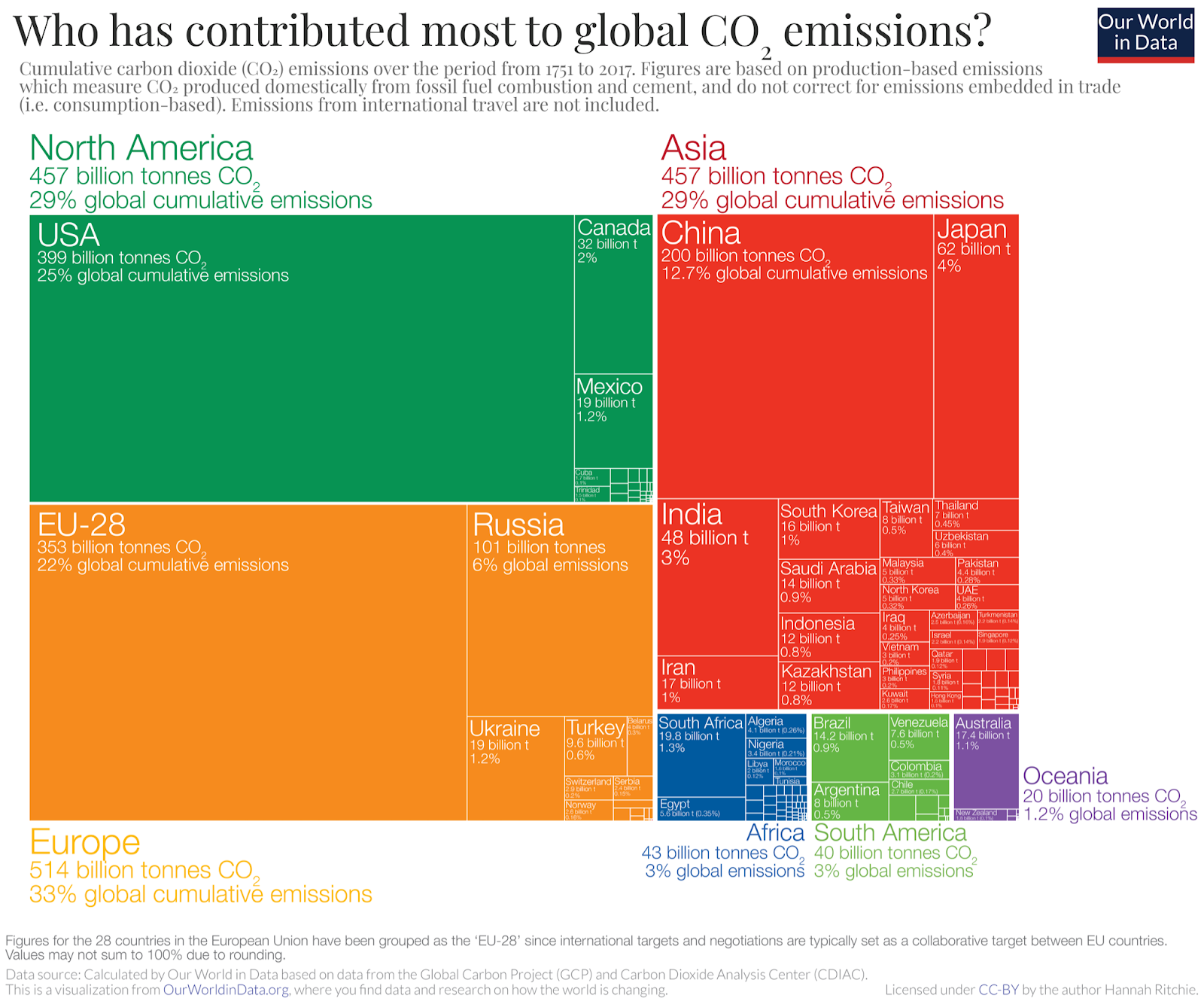Climate Change and Inequality in America



Source: Climate Impact Lab
Inequality is increasingly reflected in the question of who bears the costs of climate change
While the United States is not merely the richest country in the world, but the richest in human history, it is also one of the most unequal of the world’s wealthy countries. That inequality is increasingly reflected in the question of who bears the costs of climate change. It is affecting who gets to migrate where they want to, who gets to build where they want to, the affordability of insurance premiums, the damage sustained by houses in weather disasters, and in the future, it will be reflected in who gets to live a normal life.
A Warmer America
Studies of the impact of climate change on the United States show that more parts of the country are becoming increasingly difficult to live in. The chart above shows average temperatures across the country between 1986 and 2005.
This chart below shows the projected climate impact between 2020 and 2039:
Source: Climate Impact Lab
As you can see, the country is getting warmer. By 2080-2099, it will be hard to find a place in America with cool temperatures (below).
Source: Climate Impact Lab
This evolving climate catastrophe has not been met with the scale of policies that are needed to meet the challenge. The energy transition is not going fast enough, with prominent scientist, Vaclav Smil, characterizing it as a state of “energy inertia” rather than rapid transition.
A Minority Do Most of the Polluting
Source: Carbon Majors Database
Inequality starts with greenhouse gas emissions. A recent study by the Carbon Majors Database found that, since the 2015 Paris Agreement on climate change, 25% of greenhouse gas emissions were from investor-owned companies, with Chevron, ExxonMobil, and BP being the largest emitters; 38% were from state-owned companies, with Saudi Aramco, Gazprom, and the National Iranian Oil Company being the largest emitters; and 37% were from nation-states, with China and the former Soviet Union being the largest emitters. In fact, since 2016, just 57 companies have contributed to 80% of the world’s greenhouse gas emissions. Rather than a decline in emissions since the Paris Agreement, there has been an increase by a majority of companies in every region except for the United States. Although this suggests that the United States and Canada are on the right track, historically, the United States is the single biggest polluter. 59.7% of the world’s greenhouse gas emissions can be traced to the United States, the European Union, and China. That’s 20% of the world’s population.
Source: Our World in Data
On the flip side, according to the UN, 91% of deaths from extreme weather events are in developing countries.
Moreover, 1% of the richest people in the world emit more greenhouse gas than the poorest 66%. This polluter elite, which is made up of 77 million people including billionaires, millionaires and those paid over $140,000, does not face the consequences of its actions. The polluter elite live in climate-insulated, air-conditioned homes, and, crucially, they can move anywhere and build anywhere.
Everyone Else Suffers
Apart from a warmer America, we are seeing greater numbers of wildfires, hurricanes, and floods, as a result of climate change. In 2023, the United States suffered 28 weather disasters with a minimum cost of $1 billion. Collectively, these disasters cost America $100 billion. This is impacting insurance premiums, which have risen in places like the Gulf Coast and California.





